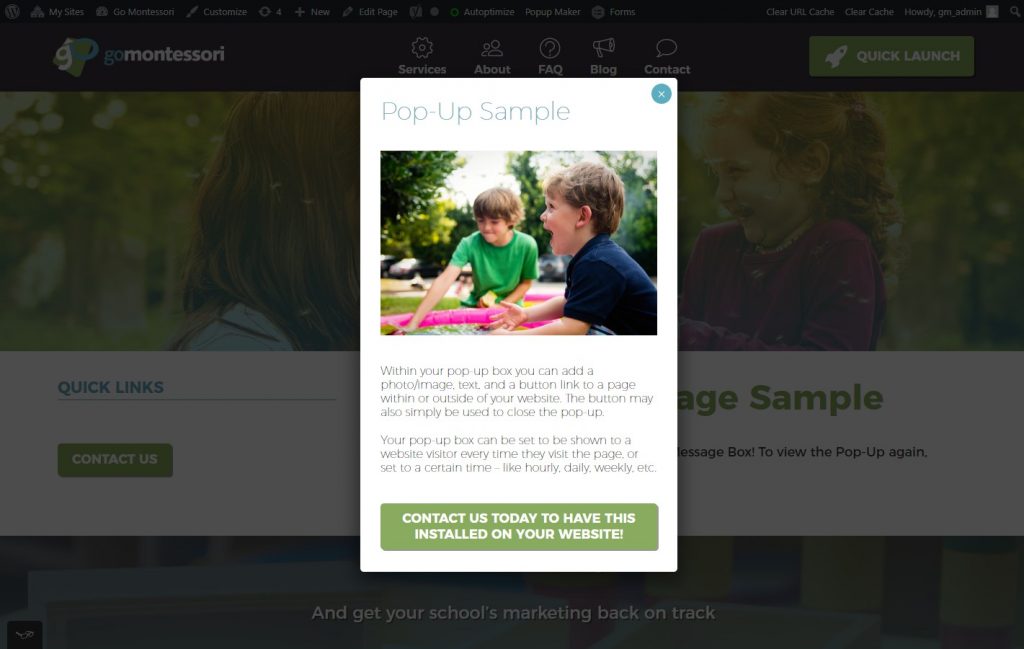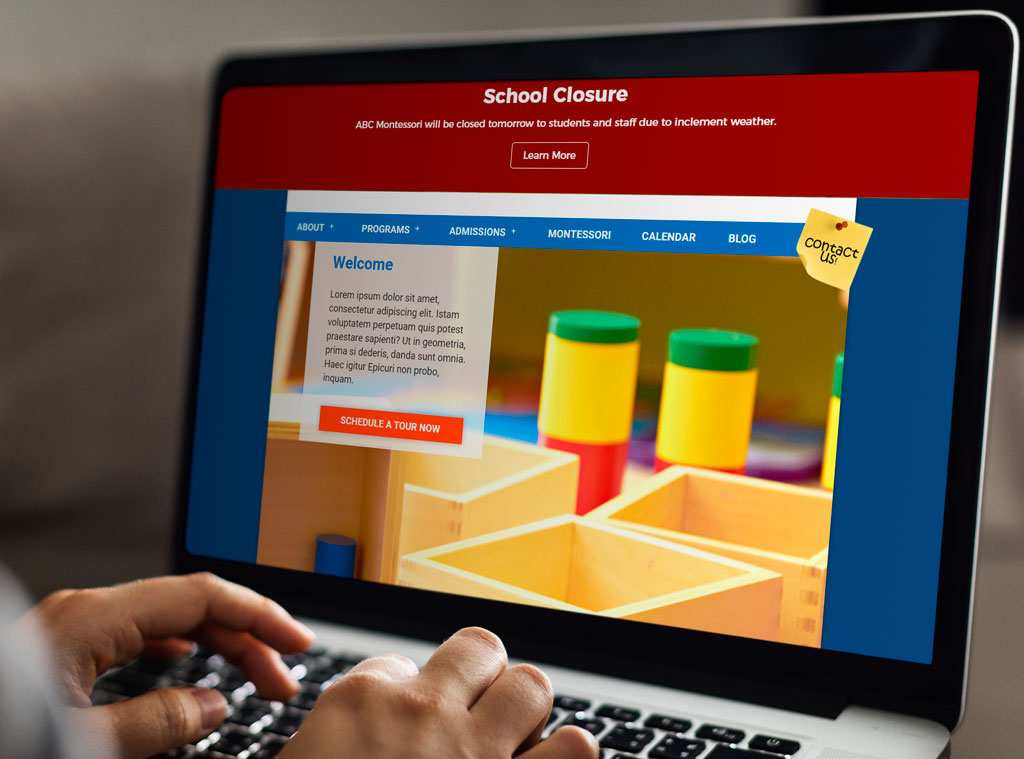5 Best Practices for Using Pop-Up Ads
Typically, when people think of “pop-up ads” they think of those annoying pop-up windows from the late 1990’s that assaulted a user immediately upon landing on a website. Those pop-ups of yesteryear were aggravating, ineffective, and could drive users away from a site. So why on earth would we want to use them now?

Fortunately, modern pop-ups are much more sophisticated. Used correctly, they can be an effective part of an overall marketing strategy to drive enrollment, fill open houses, or increase email list subscribers. They can also be used to deliver time-sensitive information to current families – such as school closures or special events.
Below, you will find our list of 5 Pop-Up Best Practices for use on your school’s website:
1. Have a clear Call to Action or Purpose

Like any website content, the goal with your pop-up ad is to deliver content clearly and concisely. Your use should then have a very clear understanding of what they are supposed to do with that content. They should not have to think about what they are viewing or what to do next. Some examples of clear calls to action include:
“RSVP for our Open House on Saturday, August 8, 2020 from 9:00-11:00am.”
“Join us for a FREE online information session on the Montessori educational method.”
“Now enrolling for Toddler and Pre-Primary Programs – request an information packet today!”
These ad examples could either start users filling out a form or lead directly to a page where they can execute the action from the ad.
The other use for pop-up ads – delivering time-sensitive information or alerts – should be equally clear and concise. Remember to address the 4 W’s – Who, What, When, Why, Where. Let’s say the the alert is reminder for an upcoming holiday show, remember to stay who is involved (or invited), what is happening, when it will be held, why it is occurring, and where it will be held. For a school closure or delay, state who is affected, what the closure is/how long the delay is, when is the closure/delay, why there is a closure or delay, and where (particularly if you have multiple buildings or facilities).
2. Make sure Pop-ups are visually engaging

Another great feature of today’s pop-ups is that they are highly customizable. We are able to utilize your school’s brand colors, images, and text in a way that is visually appealing and aligns with the site’s design. We are no longer confined to the standard grey-bordered web browser boxes full of mismatched text! But, with great power comes great responsibility. Just because we can add all of the bells and whistles, doesn’t mean we should.
Going along with the first best practice, the visual message should also be clear and concise. Stick to 1-2 high-quality photos along with your call to action text.
If your pop-up is and event reminder type, think about adding elements from your event invitation to bring cohesiveness to the messaging the user may have already seen.
For alerts, contrast is very important. You want to make sure the ad is seen and the message is received, so we recommend bright colors that will align with, but will also stand out against, your website in the background.
3. Use Pop-ups on the correct page(s)

A lot of people automatically assume that their pop-up should go on the homepage, and while often that is true, it isn’t always the case.
For example, if your pop-up is targeted towards current families, such as an event reminder, it may be wiser to feature the pop-up on pages that they frequent and are likely to have bookmarked – such as Parent portals and calendar pages. For very important school alerts, such as closures, a top-bar pop up on EVERY page might be the right choice.
For prospective families, perhaps you’re ONLY enrolling for your toddler program, so you may want to save your enrollment offer pop-up for that page alone.
4. Time Pop-up displays appropriately and use cookies

Firstly, you want to time pop-up ads appropriately. Timing in this sense is referring to the delay between page load and the display of the pop-up. The timing of pop-up ads can involve a little bit of guess work and a little bit of trial and error. While it may be appropriate for an alert to pop-up immediately when the homepage is opened, that may not be the case for an offer such as an enrollment special or an open house. Depending on the layout of your page and the amount of content, it might make more sense to delay the pop-up display by several seconds or even a full minute, to allow the user to become familiar with your school before making them an offer.
Secondly, you should utilize cookies on your pop-ups. No, we don’t mean delicious baked goods. Website “cookies” are little bits of data that are collected when a user visits a website. There are many types of cookies, but for the purpose of a pop-up ad, we would use a cookie that tells us how often to display an ad to a particular user. There are many options for this which we would discuss on a case-by-case basis when we set up your pop-up, but the basic idea is that you don’t want to inundate a user with the same ad that they’ve already seen, whether or not they acted on it. Closing an ad without interacting is just like saying “no, thanks,” to an offer.
Please note that under GDRP and the ePrivacy Directive, a cookie consent message must be used when collecting cookies for website visitors from the EU.
5. Follow SEO best practices
In 2017, Google began devaluing rankings of websites that use intrusive pop-up ads, since those ads could interfere with a user experience, particularly on mobile devices. Following our best practices above should help you fall in line with search engine guidelines, but there are a few other points to keep in mind:
- Pop-ups should not cover all of your content and be difficult to close or dismiss in order for your content to be read, especially on mobile devices.
- In addition to timed pop-ups that only open after a delay, pop-ups can also close on a timer if the user does not interact with them.
- There is more forgiveness for pop-ups on desktop display, so they could be disabled on mobile devices if needed.
In the end, a pop-up ad may be a solid marketing solution for your school in order to promote an event, an offer, or to communicate important time-sensitive information. Used correctly, pop-ups have high rates of user engagement and click-through. If you’re interested in talking about how to use a pop-up on your school website, contact us today!

Comments are closed here.